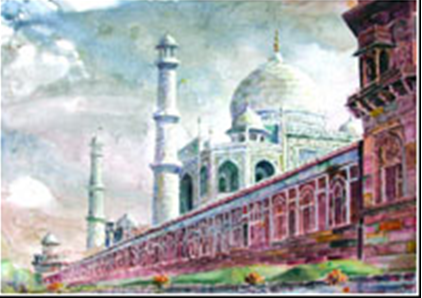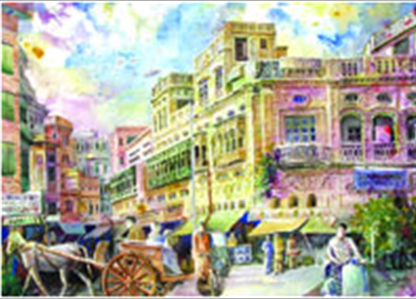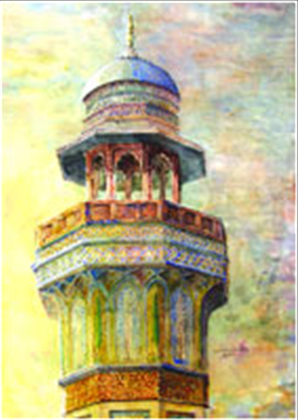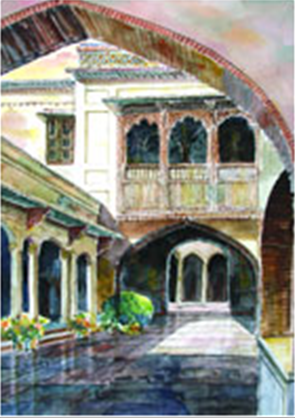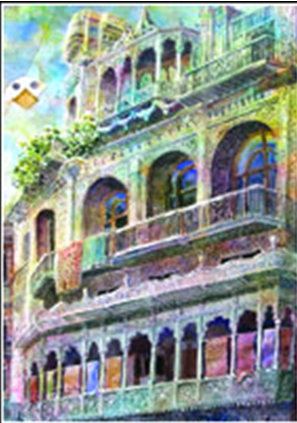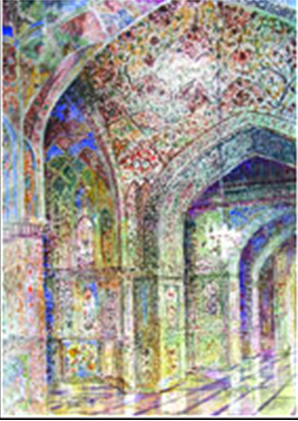Lahore: architectural treasures
(Created page with "{| class="wikitable" |- |colspan="0"|<div style="font-size:100%"> This is a collection of articles archived for the excellence of their content.<br/>You can help by converting...") |
Revision as of 18:46, 21 October 2013
This is a collection of articles archived for the excellence of their content. Readers will be able to edit existing articles and post new articles directly |
Lahore: architectural treasures
Documenting architectural treasures
By Fahad Rahman
Within the mainstream discussion on culture, architecture and aesthetics are a few artists who are trying to tilt the spotlight a little towards the lost and ignored gems of world culture and heritage.
The ancient but largely forgotten city of Lahore is the primary subject of the renowned watercolourist and architect, Muhammad Shafiq, whose latest collection of painting has been displayed at the Hamail Art Gallery, Lahore. Shafiq states, “Pakistan has a rich ancient culture, which offers tremendous inspiration to an artist. It is my aim and responsibility to show the beauty and craftsmanship of my country, and especially of Lahore.”
The collection of watercolour paintings is a tribute to the architectural masterpieces that stand proud but neglected in Pakistan, which are no less than the most famous structures in the world. The city of Lahore is blessed with numerous buildings ranging from the times of the Mughals, like the Badshahi Mosque, Lahore Fort and Shalimar Gardens, to the Mughal-Gothic architecture from the Colonial period, like the General Post Office and the Lahore High Court. Lahore may have never figured in the global radar for beauty and culture, but it can never be forgotten simply because of its endless treasures.
Shafiq works hard to protect and display these treasures of Lahore in his paintings. “I go to the site of each building that I want to paint and absorb the atmosphere and its surroundings. I take a picture and sketch the general outlines. Then I spend considerable time embellishing and filling in the detailed mosaic, patterns and structures of these stunning buildings.” he explains.
The artist has not only restricted himself to Lahore; he has also painted buildings and places in Peshawar, the Rohtas Fort and as well as the serene scenery along River Swat. The collection escapes the label of being parochial by the addition of paintings of the Lal Qila in Delhi, the iconic miraculous Taj Mahal and the phenomenal Agra Fort.
An interesting aspect of the collection is the paintings of the traditional houses of old Lahore. They depict an era and a lifestyle that seems so quaint and forgotten — a relic of the past. Interestingly though, these old houses still exist and are inhabited by people that may or may not still be living the traditional lifestyle. The painting of an old house in Gumti Bazar, Lahore represents the culture of Lahore that seems to be lost and is a representation of the artist’s yearning for the imagined purity and peace of the ‘glorious, simple past’. A kite flies in the sky and becomes the quintessential symbol of Lahori culture and lifestyle.
Shafiq has had years of experience and practice in this field of artistic expression and has produced the collection that should surely be considered his finest work, and a gift to the city of Lahore. He has exhibited his work in many countries and narrates how audiences there were awed by the beauty of the paintings and the buildings they represented. “People asked me if Lahore was really this beautiful, and I always told them, ‘No, Lahore is many times more beautiful!’”
He believes that Pakistanis should appreciate the wonders and richness of their own country and art rather than always being in awe of the West.
This very belief has motivated Shafiq to produce this collection of paintings, in the hope that it may make us realise that we as a people and civilisation are also capable of producing grand objects of art and architecture.
And he is not retiring from this noble cause any time soon as his future plans are to paint the ancient sites of the Mohenjodaro, Harappa, Taxila etc. These historical sites are one of Pakistan’s most precious cultural assets and surprisingly they have not been given the artistic attention that they rightly deserve.
Shafiq’s paintings implore their Pakistani audience to take heed of the richness and beauty that surrounds them, which unfortunately is fading into oblivion due to simple neglect. It is a shame that it should take the splendour and appeal of these paintings to make us realise their worth but this surely demonstrates the talent and ability of the artist.
It has been said that the artist’s depiction of the real eventually ends up being the reality itself. As long as these paintings of the grand architectural achievements of our culture and heritage hang on our walls and are a constant testament to the richness and ingenuity of our culture, we can rest assured that they will never be completely forgotten.
